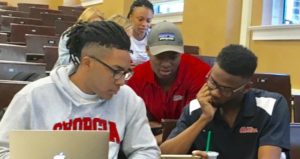
Designing Developmentally: Simple Strategies to Get Students Thinking
I continue to be concerned that we don’t design learning experiences as developmentally as we should. What happens to students across a course (and the collection of courses that make up a degree program) ought to advance their knowledge and skills. Generally, we do a good job on the knowledge part, but we mostly take skill development for granted. We assume it just happens, and it does, sort of, just not as efficiently and extensively as it could if we purposefully intervened.







